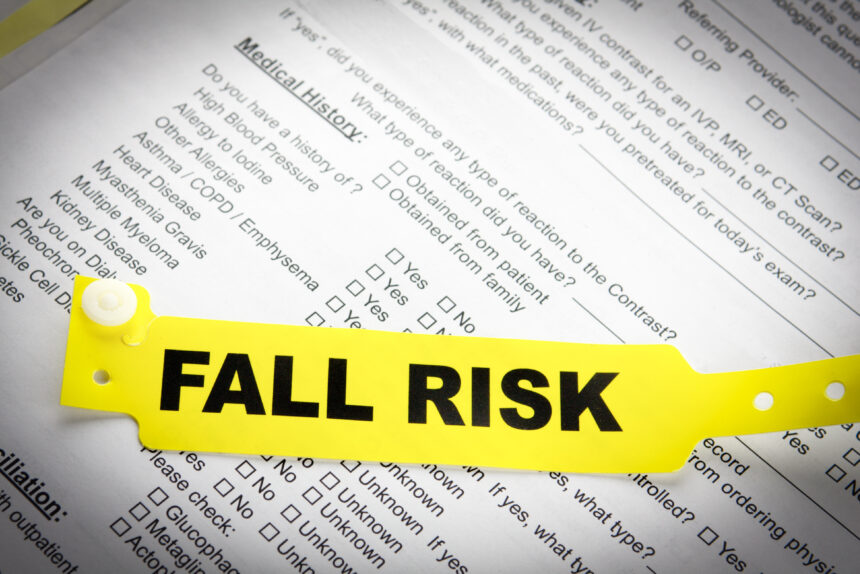6 Simple Techniques For Dementia Fall Risk
Not known Incorrect Statements About Dementia Fall Risk
Table of ContentsSome Known Details About Dementia Fall Risk Dementia Fall Risk Can Be Fun For EveryoneSome Of Dementia Fall RiskDementia Fall Risk Things To Know Before You BuyThe Main Principles Of Dementia Fall Risk
You may be nervous because you have actually had an autumn before or due to the fact that you have actually seen you're beginning to really feel unsteady on your feet. You may have observed changes to your wellness, or simply feel like you're reducing a little. Whatever the reason, it isn't uncommon to become mindful and lose self-confidence, and this can stop you doing the important things you used to do and make you feel extra isolated.If you have actually had a loss or you've started to feel unstable, inform your medical professional even if you feel great otherwise. Your doctor can examine your balance and the way you walk to see if renovations can be made. They may be able to refer you for a drops risk evaluation or to the falls avoidance service.
This details can be acquired through interviews with the individual, their caretakers, and a review of their clinical documents. Begin by asking the specific about their history of falls, including the regularity and conditions of any kind of current falls. Dementia Fall Risk. Ask about any type of wheelchair problems they might experience, such as unsteady or problem walking
Conduct a complete testimonial of the individual's medications, paying specific focus to those understood to boost the risk of falls, such as sedatives or medications that reduced high blood pressure. Identify if they are taking several medicines or if there have actually been recent adjustments in their medication regimen. Assess the individual's home atmosphere for potential hazards that could enhance the risk of drops, such as poor lighting, loosened rugs, or absence of grab bars in the bathroom.
Facts About Dementia Fall Risk Uncovered
Guide the individual via the loss threat analysis form, clarifying each question and recording their reactions accurately. Guarantee that the private recognizes the objective of the evaluation and feels comfortable giving sincere responses. Calculate the total risk score based on the actions provided in the evaluation kind. Identify the individual's danger group (low, tool, or high) based on the overall rating and the existence of automatic high-risk condition elements.
This plan may include workout programs to improve toughness and balance, medicine adjustments, home alterations, and recommendations to other specialists as required. Consistently check the individual's development and reassess their risk of drops as needed. Modify the treatment strategy based upon changes in their wellness status or home environment. Offer ongoing education and learning and support to promote safety and decrease the danger of falls in their day-to-day living tasks.
Several studies have shown that physical treatment can aid to reduce the danger of dropping in grownups ages 65 and older. In a new study (that considered falls threat in women ages 80 and older), researchers calculated the economic impact of picking physical therapy to avoid drops, and they discovered that doing so conserves $2,144, consisting of all the concealed costs of your time, pain, missed life events, and the bucks spent for services.
Unknown Facts About Dementia Fall Risk
Evaluating your balance, toughness, and strolling capability. A home security assessment. Based on the examination results, your physical specialist will certainly design a plan that is tailored to your specific go to website needs.
Older grownups who have difficulty strolling and talking at the exact same time are at a greater threat of dropping. Dementia Fall Risk. To assist boost your safety throughout day-to-day tasks, your physiotherapist may design a training program that will certainly test you to maintain standing and walking while you do another task. Examples include walking or standing while counting backwards, having a discussion, or lugging a bag of groceries
Set objectives for raising their physical activity. Work out extra to raise their stamina and equilibrium. These programs usually are led by volunteer trains.
Top Guidelines Of Dementia Fall Risk

Measles, or rubeola, is a highly contagious, acute viral contagious condition brought on by the measles virus. Some individuals think about measles as simply a breakout and high temperature that cleans up in a few days; nevertheless, measles can trigger significant health complications, specifically in children more youthful than 5-years-old. The finest security versus measles is the measles, mumps, and rubella (MMR) vaccination.
Autumns are an usual reason of injury among older adults.
What Does Dementia Fall Risk Mean?

She has a clinical history of seizure disorder and high blood pressure. She is receiving an IV mixture and taking Gabapentin and Lasix. She has no background of drops, her gait is stable, and she voids with no problems. The previous registered nurse states that she requires assistance to the washroom when go she requires to go.
Examples of usual loss interventions/measures consist of: Guaranteeing a client's essential things are within reach. Beyond comprehending how to make use of the Johns Hopkins Loss Risk Analysis Tool, it's vital that centers integrate its use into a more extensive autumn prevention plan.